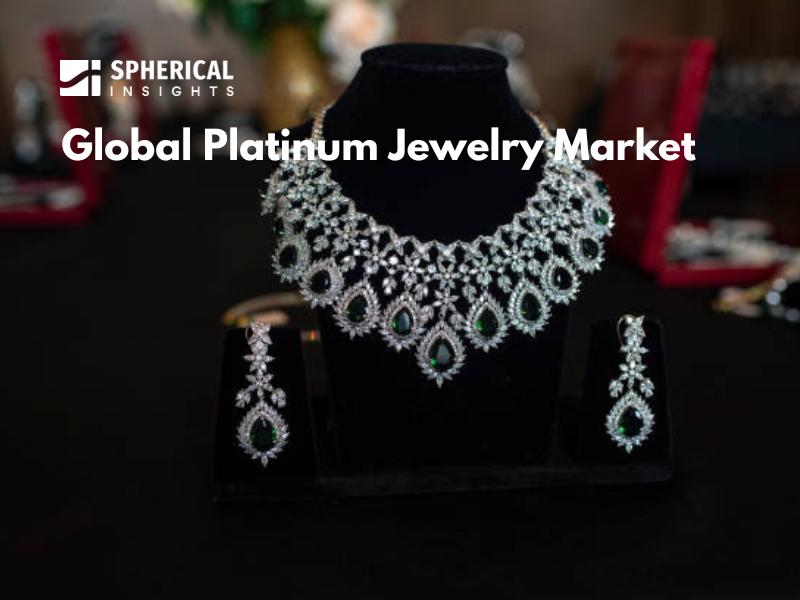The allure of platinum jewelry has captivated consumers for centuries, and recent market trends indicate a robust growth trajectory. According to a research report by Spherical Insights & Consulting, the global platinum jewelry market is projected to expand from USD 3,018.46 million in 2023 to USD 5,332.34 million by 2033, achieving a compound annual growth rate (CAGR) of 5.86%. This article delves into the various factors driving this growth, the market’s segmentation, and the challenges it faces.
Market Overview
Platinum, known for its rarity and exceptional durability, stands out as a premier choice for fine jewelry. Unlike other white metals, platinum does not tarnish or lose its luster over time, ensuring that pieces maintain their brilliance for years. Its strength and density make it an ideal setting for valuable gemstones, providing security without compromising the integrity of the jewelry. While it can scratch, these imperfections do not result in material loss, preserving the piece’s overall quality.
Factors Driving Market Growth
The global platinum jewelry market is experiencing robust growth due to several key factors:
Consumer Preference for Durability: There is a rising demand for high-quality, durable jewelry that retains its shine and lasts a lifetime. Platinum’s inherent properties make it a favored choice among consumers seeking longevity.
Investment Appeal: As consumers increasingly view precious metals as investment assets, platinum is gaining popularity due to its rarity and potential for high returns. Its limited global supply and complex extraction processes further enhance its value.
Rising Disposable Income: Increased disposable income and luxury spending, particularly in emerging economies across Asia-Pacific and the Middle East, are contributing to the growth of the platinum jewelry market.
Bridal and Fine Jewelry Segments: The expanding bridal segment, where platinum is often chosen for engagement rings and wedding bands, is a significant driver of market growth.
Exclusivity and Appeal: The limited global supply of platinum and the complexities involved in its extraction enhance its exclusivity, making it a sought-after choice for consumers.
Market Segmentation
By Type
The platinum jewelry market can be segmented into various types, including rings, necklaces, earrings, bracelets, and others. Among these, the rings segment is expected to hold the largest market share during the forecast period. The growing popularity of platinum engagement rings and wedding bands, particularly among both men and women, is a key driver for this segment.
By Distribution Channel
The market is categorized into online retailers, specialty stores, and others. Specialty stores are anticipated to account for a significant share of the market, as consumers prefer purchasing high-value items from trusted retailers. The in-store experience, which includes expert guidance and the ability to physically inspect products, adds value to the buying process.
By End User
The market is divided into men and women, with the women’s segment projected to grow at the fastest CAGR during the forecast period. Jewelry has long been an integral part of women’s cultural and personal expression, fueling continued demand in this demographic.
Regional Insights
Asia Pacific
Asia Pacific is projected to hold the largest share of the global platinum jewelry market over the forecast period. Countries like India, China, and Japan are key markets, with Japan contributing significantly to global sales. While luxury jewelry remains in high demand in China, the rising interest in 24-karat gold could present a competitive challenge.
North America
North America is expected to register the fastest growth in the global platinum jewelry market during the forecast period. The United States leads regional demand, particularly in the bridal segment, where an increasing number of brides are opting for platinum in engagement and wedding rings.
Key Players in the Market
Several prominent players dominate the platinum jewelry market, including:
Piaget
Chopard
Harry Winston, Inc.
Tiffany & Co.
Graff
Bulgari S.p.A
Mikimoto America
Cartier
Van Cleef & Arpels
These companies are known for their craftsmanship and luxury offerings, contributing to the overall growth of the market.
Challenges Facing the Market
Despite its growth potential, the platinum jewelry market faces several challenges:
High Cost: Platinum is significantly more expensive than other precious metals, which can limit its accessibility to a broader consumer base.
Limited Supply: The rarity of platinum and the labor-intensive extraction process can lead to supply chain disruptions, impacting market stability.
Competition from Gold and Alternatives: Gold remains a preferred choice for many consumers, particularly in major markets like China and India. Additionally, alternative materials such as white gold and palladium offer similar aesthetics at lower costs.
Low Resale Value Awareness: Many consumers are unaware of platinum’s long-term investment potential compared to gold, which can affect purchase decisions.
Changing Fashion Trends: Shifting consumer preferences in jewelry design and materials can divert attention from traditional platinum pieces.
Conclusion
The global platinum jewelry market is poised for significant growth, driven by rising consumer preferences for durable luxury items and the increasing appeal of precious metals as investment assets. While challenges such as high costs and competition from alternative materials exist, the market’s unique characteristics and the allure of platinum jewelry continue to attract consumers worldwide. As the market evolves, understanding these dynamics will be crucial for stakeholders aiming to capitalize on this burgeoning sector.




